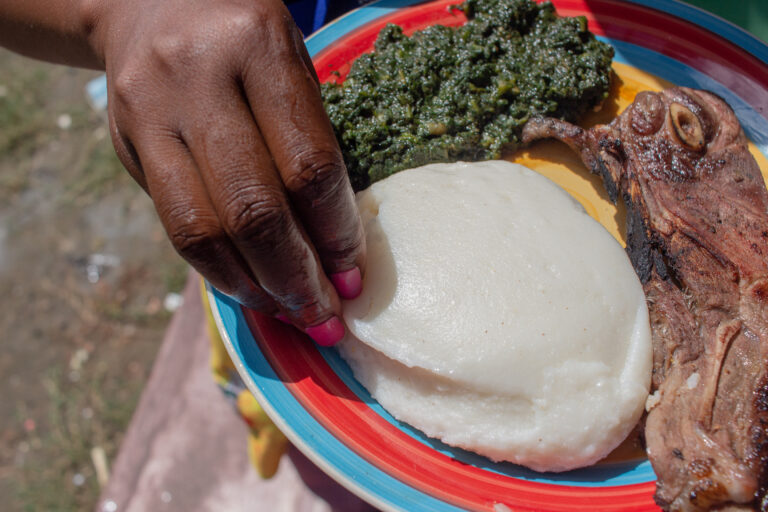Sadza is a traditional cornmeal porridge that holds great cultural significance in Zimbabwean cuisine. Also known as nshima or pap, sadza has been a part of Zimbabwean culture for centuries. Read on for its history, ingredients, and how to make it at home.
Our team at Remitly created this guide as part of our series that celebrates the traditional dishes of our global customers. We hope it makes you hungry!
How to Cook Sadza the Zimbabwean Way
Cooking Sadza the Zimbabwean way is a simple process that requires only a few ingredients.
To prepare Sadza, you will need cornmeal, water, and salt. The cornmeal is mixed with water to form a thick paste, which is then cooked over low heat until it thickens into a porridge-like consistency.
To serve Sadza, shape it into small balls or patties, and use these to scoop up relishes and stews.
The Origins of Sadza
Sadza has a long and rich history in Zimbabwe, dating back to the ancient times of the Shona people. The dish was traditionally prepared using wild grains and yams, which were pounded, sifted, and then cooked into a thick porridge.
As the centuries went by, Sadza became a staple food in Zimbabwean culture and was made using maize flour, which had been introduced by Portuguese traders in the 1600s.
Over time, different regions of Zimbabwe developed their unique variations of Sadza. In the northern parts of the country, the porridge is typically cooked to a softer consistency and is often served with a tomato and onion relish. In the south, Sadza is prepared much thicker and is typically served with stewed meats or vegetables.
Today, Sadza remains an essential part of Zimbabwean cuisine and is enjoyed by people of all ages and backgrounds.
Because of its high nutritional value and low cost, Sadza has become an essential food source in many households throughout Zimbabwe. It is an excellent source of energy and is rich in carbohydrates, making it an ideal dish for people who engage in physical labor.
The Role of Cornmeal
The primary ingredient used in Sadza is cornmeal, which is made from ground maize or corn. The maize is first dried and then milled into a fine powder, which is then used to make the porridge.
The cornmeal used in Sadza is often referred to as “mealie meal” in Zimbabwe and is available in different grades. The finer the grade of cornmeal, the smoother the porridge will be.
The coarser mealie meal is best suited for preparing Sadza that is cooked to a thicker, firmer consistency.
Maize in Africa
Corn, also known as maize, was brought to Africa in the 16th century by the Portuguese. Since its introduction, it has become a staple food crop across many African countries. The grain is versatile and can grow in a variety of climates, making it a reliable source of food.
It plays a crucial role in food security, providing a stable food source for millions of people. Corn is not only consumed directly but also serves as feed for livestock. It has economic benefits too, offering a source of income for farmers.
However, the reliance on corn has its drawbacks. Pests like the Fall Armyworm and diseases can negatively affect corn yields, and overreliance on one crop can have devastating effects if the crop yields are poor.
The government of Zimbabwe, as well as those of neighboring countries, is working on various initiatives to improve maize cultivation.
Learn More About Zimbabwean Food
The cuisine of Zimbabwe is influenced by the indigenous Shona and Ndebele cultures, as well as European settlers and the foods of neighboring countries.
One of the defining characteristics of Zimbabwean cuisine is its use of locally sourced ingredients. Staples such as maize, sorghum, and millet are commonly used in dishes like Sadza, while vegetables such as pumpkin leaves, kale, and okra are popular additions to stews and relishes.
Meat, particularly beef and chicken, is also a significant component of Zimbabwean cuisine. Dishes like Nyama Choma (grilled meat) and Dovi (peanut butter stew with meat) are enjoyed by many Zimbabweans.
Whether you’re a food enthusiast or simply curious about different cultures, exploring Zimbabwean cuisine is a delightful way to experience the flavors and traditions of this beautiful country.
Visit the homepage, download our app, or check out our Help Center to get started.
